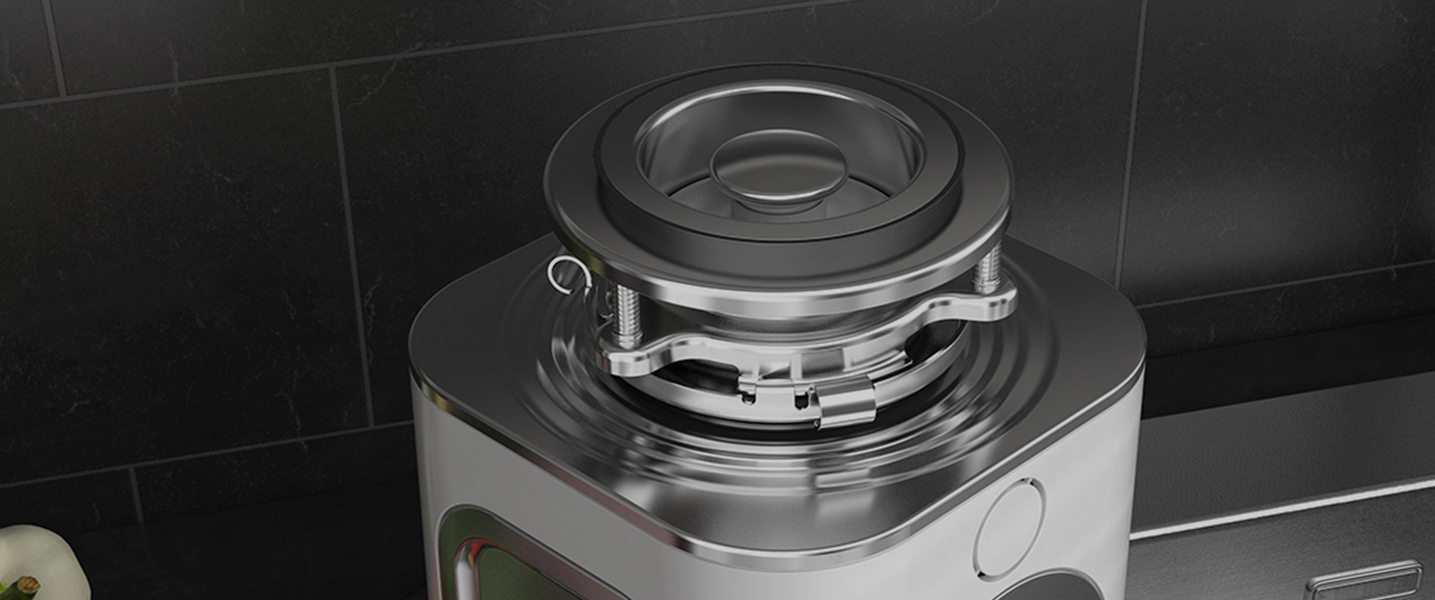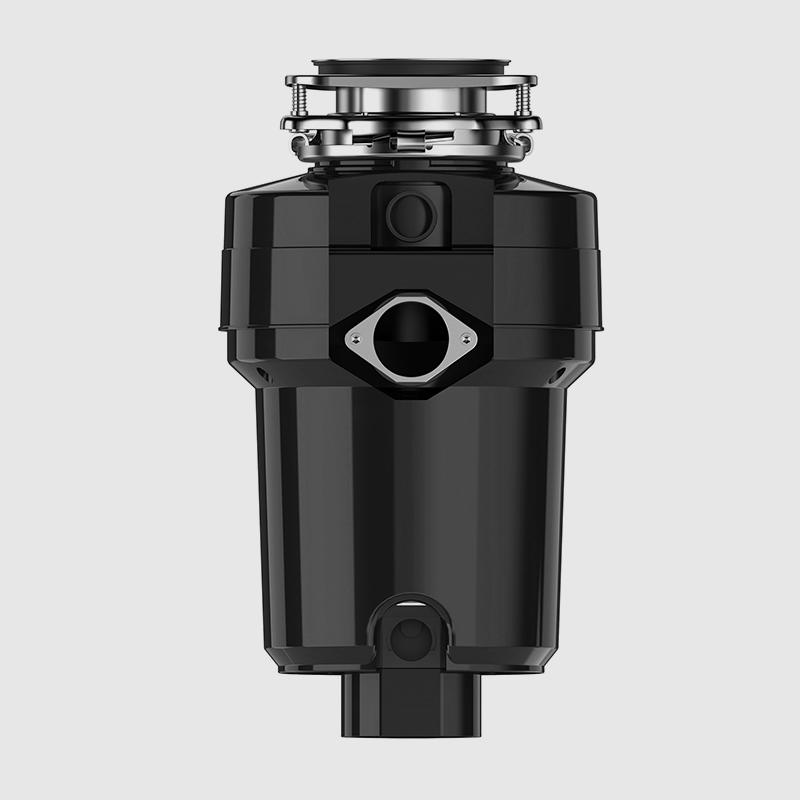What are the environmental and economic implications of widespread adoption of Household Food Waste Disposers?
The growing concern over environmental sustainability has led to an increased focus on managing food waste, a significant contributor to greenhouse gas emissions and resource depletion. Household Food Waste Disposers (HFWDs), often referred to as garbage disposals or waste disposers, offer a potential solution to reduce food waste at the individual household level. These devices are installed beneath kitchen sinks and grind food scraps into fine particles, which are then flushed down the drain. While the adoption of HFWDs can alleviate certain waste-related issues, it also raises important questions about environmental impact, economic feasibility, and waste management practices.
Environmental Implications:
The adoption of HFWDs can have both positive and negative environmental consequences. On the positive side, reducing the amount of food waste in landfills can potentially decrease the production of methane, a potent greenhouse gas generated by decomposing organic matter. HFWDs may also reduce the need for landfill space and lessen the burden on waste management infrastructure.
the environmental benefits of HFWDs depend on several factors. The energy and water consumption associated with operating these devices could offset some of the gains in methane reduction. Additionally, the ground-up food waste that enters wastewater systems might strain sewage treatment plants, potentially leading to increased energy consumption and nutrient pollution in water bodies.
Economic Feasibility:
The economic implications of widespread HFWD adoption are multifaceted. While these devices can help households save on waste disposal costs, as they send less waste to landfills, the initial investment, installation, and potential maintenance costs of HFWDs must also be considered. Moreover, the strain on wastewater treatment facilities caused by food waste particles could lead to increased operational costs for these facilities, which might eventually be passed on to consumers through utility bills.
Waste Management Practices:
The widespread adoption of HFWDs could necessitate changes in waste management practices and policies. Municipalities and sewage treatment plants might need to upgrade their systems to accommodate the increased load of ground food waste. Proper maintenance and usage guidelines for HFWDs would also be crucial to prevent clogs and blockages in the sewage system, which could lead to costly repairs and potential environmental contamination.
Behavioral Shifts:
The introduction of HFWDs could influence consumer behavior. With a convenient method of food waste disposal, households might become less inclined to engage in other waste reduction practices, such as composting. This could result in missed opportunities to use food waste for beneficial purposes, such as creating nutrient-rich soil amendments.
The potential benefits and drawbacks of widespread HFWD adoption underscore the complexity of addressing food waste at the household level. The environmental and economic implications must be carefully evaluated in the context of local waste management systems, energy sources, and water availability. As this technology continues to gain traction, a comprehensive assessment that considers both short-term benefits and long-term consequences will be essential for making informed decisions about the role of Household Food Waste Disposers in sustainable waste management strategies.
How does the adoption of Household Food Waste Disposers contribute to sustainable waste management and resource conservation?
The global challenge of managing food waste has led to the exploration of innovative solutions that not only alleviate environmental burdens but also contribute to sustainable waste management practices. Household Food Waste Disposers (HFWDs), commonly known as garbage disposals or waste disposers, have emerged as a technology with the potential to address this issue at the individual household level. These devices are designed to grind food scraps into small particles, which are then flushed down the drain. The adoption of HFWDs can offer a range of benefits related to sustainable waste management and resource conservation.
Reduction of Landfill Impact:
One of the primary advantages of HFWDs is their potential to reduce the volume of food waste entering landfills. By grinding food scraps and diverting them from traditional waste disposal methods, HFWDs can help decrease the overall load on landfills. This reduction has a twofold effect: it frees up valuable landfill space and reduces the methane emissions that result from the decomposition of organic waste in landfills. Methane is a potent greenhouse gas, and its mitigation contributes to efforts to combat climate change.
Energy Recovery Potential:
Food waste that enters wastewater treatment systems through HFWDs has the potential to be harnessed for energy recovery. Wastewater treatment facilities can utilize advanced technologies to capture biogas, a mixture of methane and carbon dioxide, generated during the treatment process. This biogas can then be used to produce renewable energy, such as electricity or heat. The integration of HFWD-generated food waste into wastewater treatment processes can contribute to more sustainable and energy-efficient sewage treatment systems.
Resource Conservation through Nutrient Recycling:
The food waste processed by HFWDs contains valuable nutrients that can be recycled and used to enrich soil. In some regions, wastewater treatment plants already use the biosolids produced during treatment as a soil amendment. By introducing food waste into the treatment process, the nutrient content of these biosolids could be enhanced, leading to improved soil quality and reduced reliance on synthetic fertilizers. This approach closes the loop on nutrient cycles and supports more sustainable agricultural practices.
Behavioral Shift towards Waste Reduction:
The adoption of HFWDs can encourage a shift in consumer behavior towards waste reduction and responsible consumption. When households have a convenient and efficient means of disposing of food waste, they are more likely to become conscious of the amount of waste they produce. This awareness can lead to reduced food waste generation in the first place, as individuals become more intentional about meal planning and portion control.
Challenges and Considerations:
While the potential benefits of HFWD adoption are promising, there are challenges and considerations that need to be addressed. These include potential impacts on wastewater treatment infrastructure, energy and water consumption associated with operating the devices, and the need for proper maintenance to prevent clogs and blockages in plumbing systems. Furthermore, effective public education campaigns are essential to ensure that users operate HFWDs correctly and understand their role in sustainable waste management.
The adoption of Household Food Waste Disposers holds promise in contributing to sustainable waste management and resource conservation. Through a combination of waste diversion from landfills, energy recovery potential, nutrient recycling, and positive shifts in consumer behavior, HFWDs offer a holistic approach to addressing food waste at the household level. To fully realize these benefits, it is crucial for stakeholders to collaborate in developing policies, infrastructure, and guidelines that support the effective and responsible use of HFWDs in a way that aligns with broader sustainability goals.

 English
English русский
русский

























